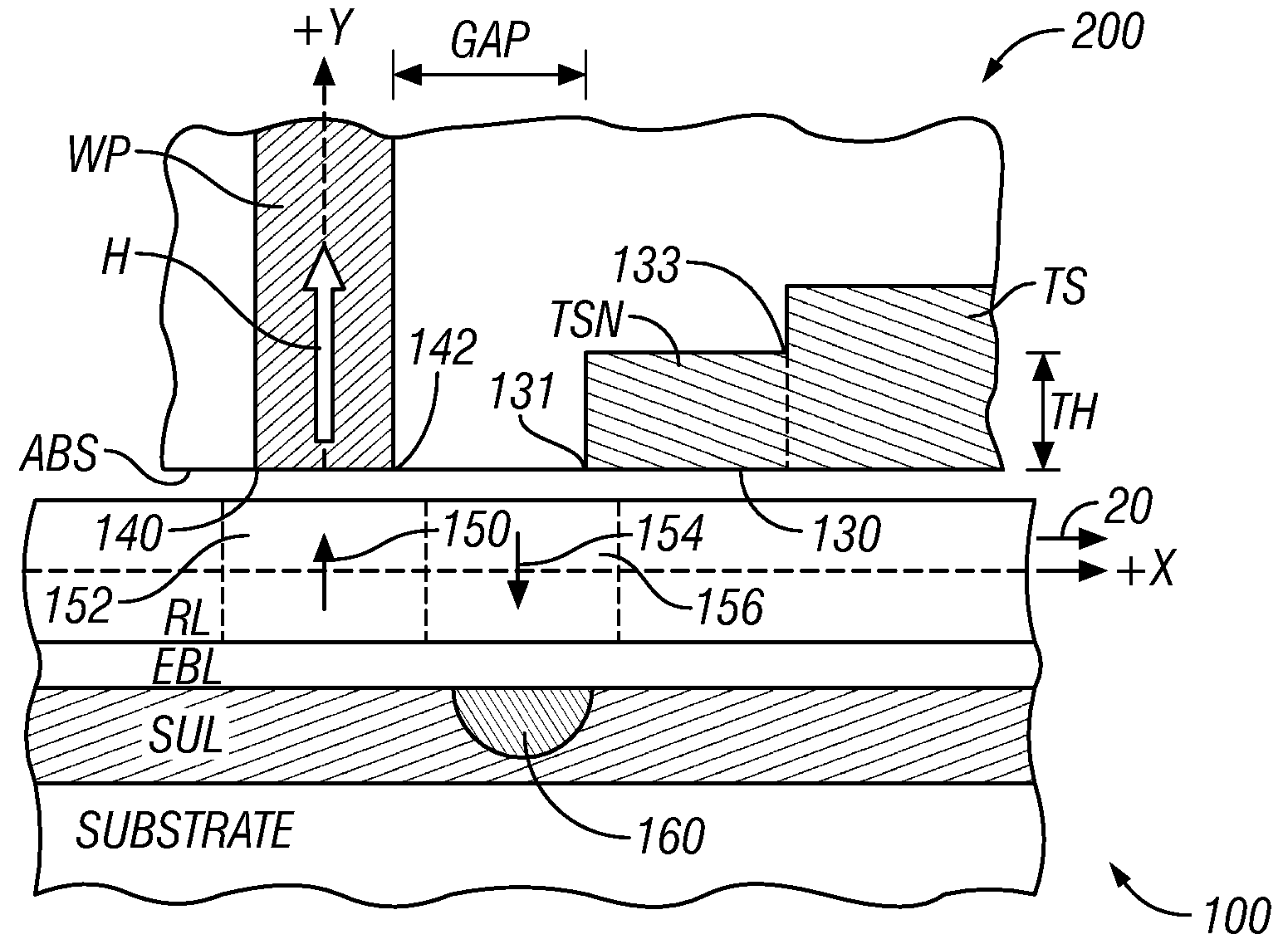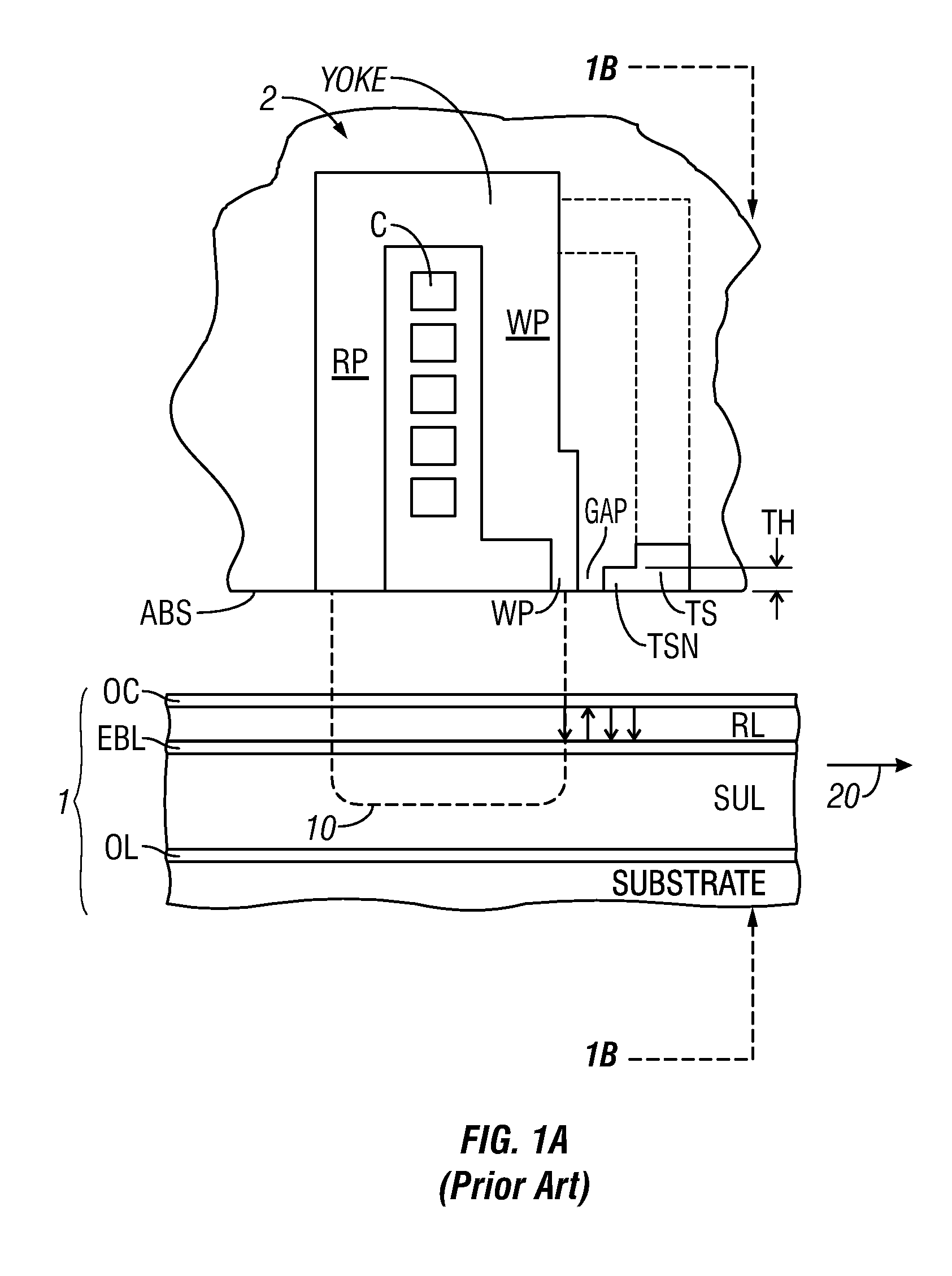Perpendicular magnetic recording system with medium having thin soft underlayer and recording head having thick-throat trailing shield
a perpendicular magnetic recording and data storage technology, applied in the field of perpendicular magnetic recording data storage systems, can solve the problems of high write field required to reverse the magnetization in the rl, difficult and costly to manufacture large numbers of these types of perpendicular magnetic recording hdds, and requires additional materials. , to achieve the effect of narrowing the magnetic transition, high write field gradient, and low magnetic permeability
- Summary
- Abstract
- Description
- Claims
- Application Information
AI Technical Summary
Benefits of technology
Problems solved by technology
Method used
Image
Examples
Embodiment Construction
[0017]FIG. 1A illustrates a hard disk drive (HDD) implementation of a perpendicular magnetic recording data storage system according to the prior art. A “dual-layer” recording disk 1 includes a perpendicular magnetic data recording layer (RL) over a “soft” or relatively low-coercivity magnetically permeable underlayer (SUL). The disk 1 also includes the hard disk substrate, a seed or onset layer (OL) for growth of the SUL, an exchange break layer (EBL) to break the magnetic exchange coupling between the magnetically permeable films of the SUL and the RL and to facilitate epitaxial growth of the RL, and a protective overcoat (OC).
[0018]The hard disk substrate may be any commercially available glass substrate, but may also be a conventional aluminum alloy with a NiP surface coating, or an alternative substrate, such as silicon, canasite or silicon-carbide. The adhesion layer or OL for the growth of the SUL may be an AlTi alloy or a similar material with a typical thickness of about 2-...
PUM
| Property | Measurement | Unit |
|---|---|---|
| thickness | aaaaa | aaaaa |
| throat height | aaaaa | aaaaa |
| thickness | aaaaa | aaaaa |
Abstract
Description
Claims
Application Information
 Login to View More
Login to View More - R&D
- Intellectual Property
- Life Sciences
- Materials
- Tech Scout
- Unparalleled Data Quality
- Higher Quality Content
- 60% Fewer Hallucinations
Browse by: Latest US Patents, China's latest patents, Technical Efficacy Thesaurus, Application Domain, Technology Topic, Popular Technical Reports.
© 2025 PatSnap. All rights reserved.Legal|Privacy policy|Modern Slavery Act Transparency Statement|Sitemap|About US| Contact US: help@patsnap.com



